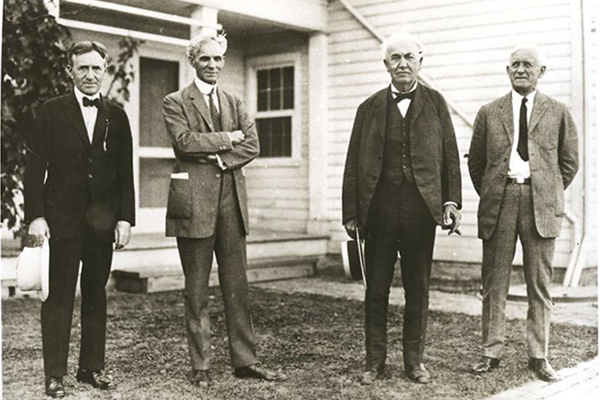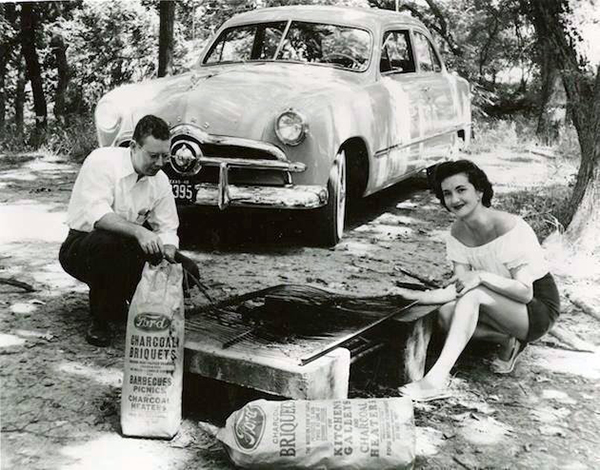FORD CHARCOAL BRIQUETTE CHANGES NAME TO KINGSFORD CHARCOAL AND OTHER AMAZING FACTS!
What do Henry Ford and barbecues have in common? It turns out quite a lot and it’s a tale you might want to share with your buds at your next backyard get-together.
HENRY FORD LOVED CAMPING
The story begins in the summer of 1919 when carmaker Henry Ford, tire magnate Harvey Firestone, and naturalist John Burroughs went on one of their annual camping trips. These super-rich pals traveled in style, bringing along their chauffeurs and a chef in a convoy of six vehicles. Today, this would be called “glamping” (as in glamorous camping).

On this particular outing, Ford invited along a real estate agent named Edward G. Kingsford, so they could discuss ways to find and buy timberland. Kingsford was married to Ford’s cousin, Minnie, whom he was very close with. Ford badly needed wood for his Model T’s since between their frame, running board, dashboard, and wheel spokes, each car used about 100 board feet of hardwood. Considering that Ford produced about a million cars a year, that’s a heck of a lot of wood. Kingsford came through and acquired 313,000 acres of timberland in Iron Mountain, Michigan – just what Ford needed.
HENRY FORD WAS AN ENVIRONMENTALIST AND HATED WASTE
Ford built a sawmill to cut the wood for shipping to Detroit but there was a problem. The mill generated lots of waste in the form of stumps, branches, and sawdust. This irked Henry for two reasons: He didn’t like to leave money lying on the ground and he was an early environmentalist who lived by the motto: “reduce, reuse, and recycle.”
HENRY FORD CREATED FORD CHARCOAL BRIQUETTES
So, what does this all have to do with backyard barbecues? Well, as an avid camper, Henry knew that it was difficult to find enough dry kindling to build and sustain a campfire. So, with the help of a chemist, he took the excess scraps from his sawmill and pressed them into lumps held together by tar and cornstarch. Sure enough, they proved a quick and easy way to keep a fire hot. After calling them “charcoal briquettes”, he opened the Ford Charcoal factory and which was built next to his sawmill. As a thank you for his help, he let Kingsford run it.

FORD CHARCOAL CHANGED ITS NAME TO KINGSFORD IN 1951
A model of efficiency, Ford’s factory produced 610 pounds of briquettes for every ton of scrap wood. Soon, Ford was marketing “Picnic Kits” containing charcoal and portable grills to promote motoring and outdoor adventures. After Henry Ford died in 1947, a group of investors bought Ford Charcoal in 1951 and renamed it Kingsford Chemical Company in order to pay tribute to the company’s heritage. Today, Kingsford Charcoal is more popular than ever. In fact, every year more than one million tons of wood waste finds new life as charcoal briquettes.
Something to think about the next time you’re grillin’ your grub.
Follow Useless Knowledge on Instagram for more amazing facts.
If you enjoyed this Useless Knowledge post, you should check out 35 Useless Facts to Make You Smarter
Have you got a Useless Question you’d like us to answer? If so, let us know by emailing us at [email protected].